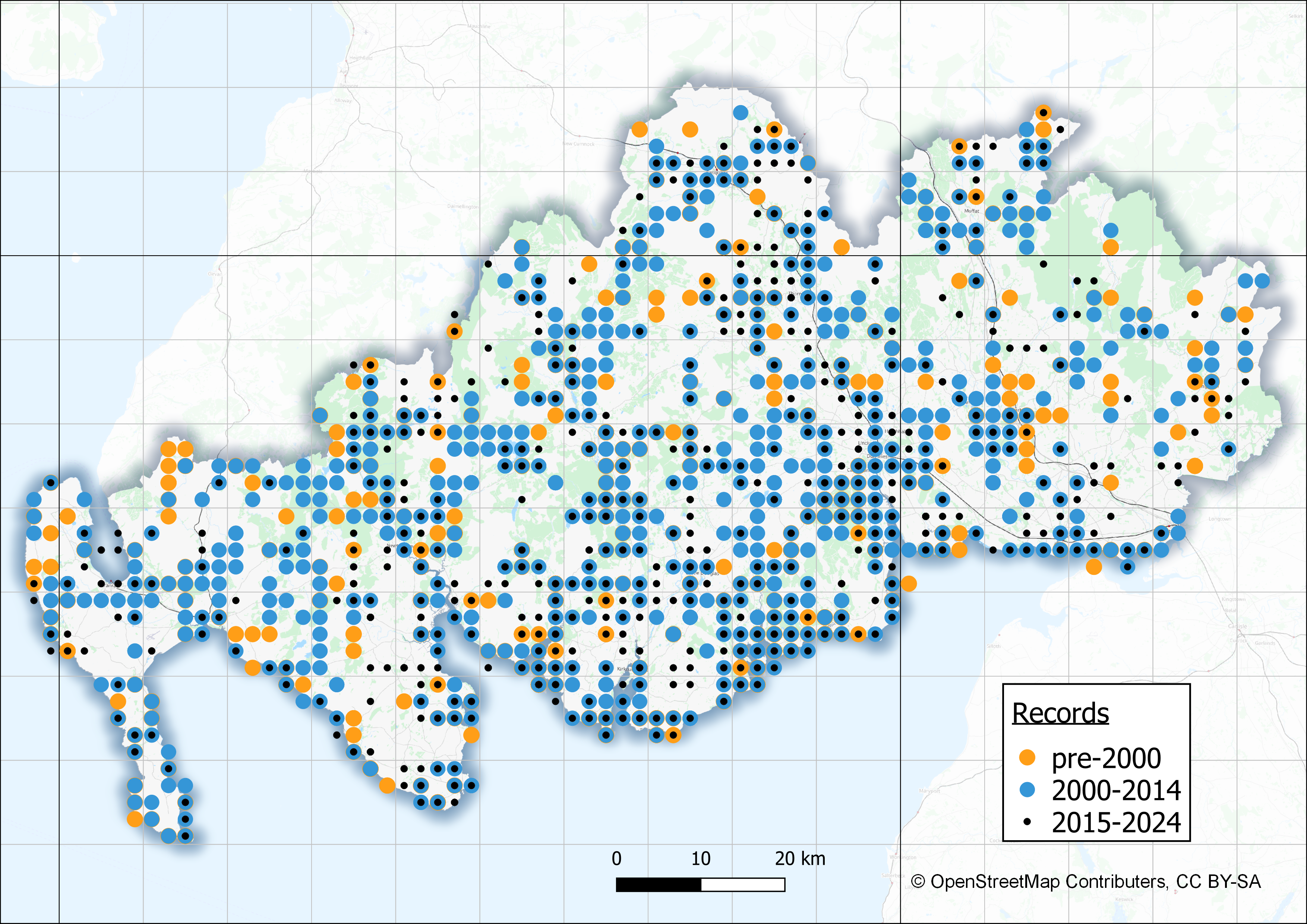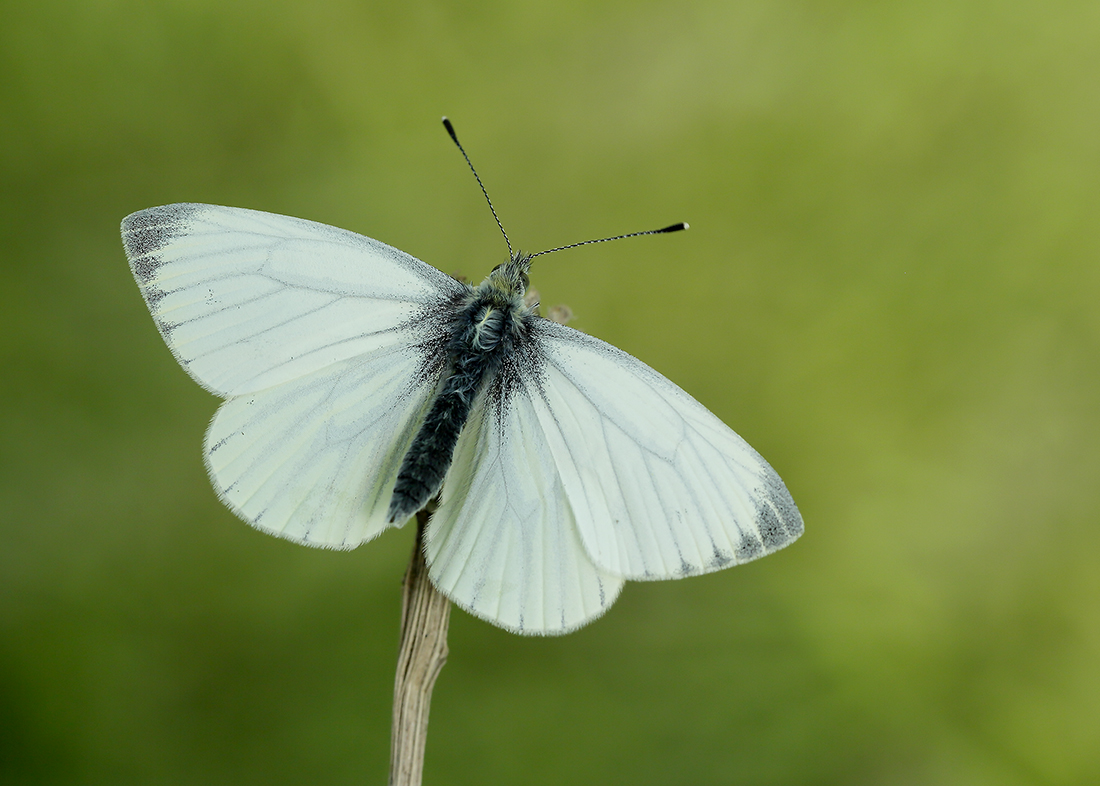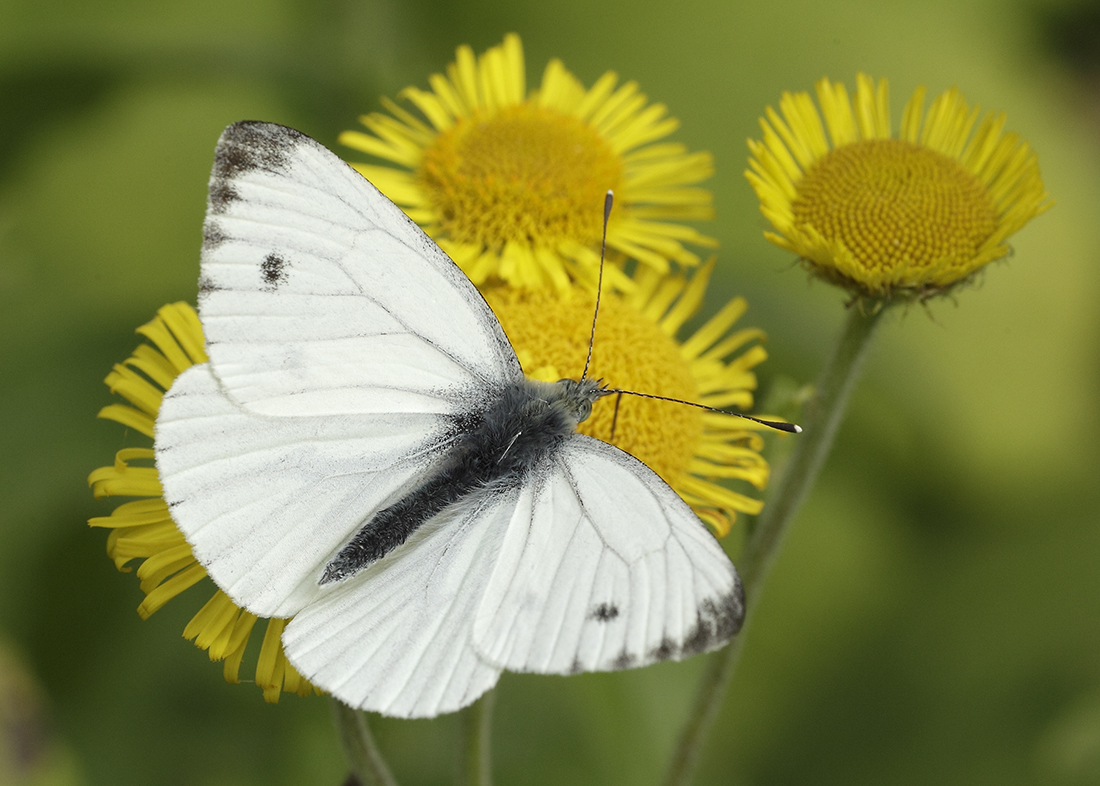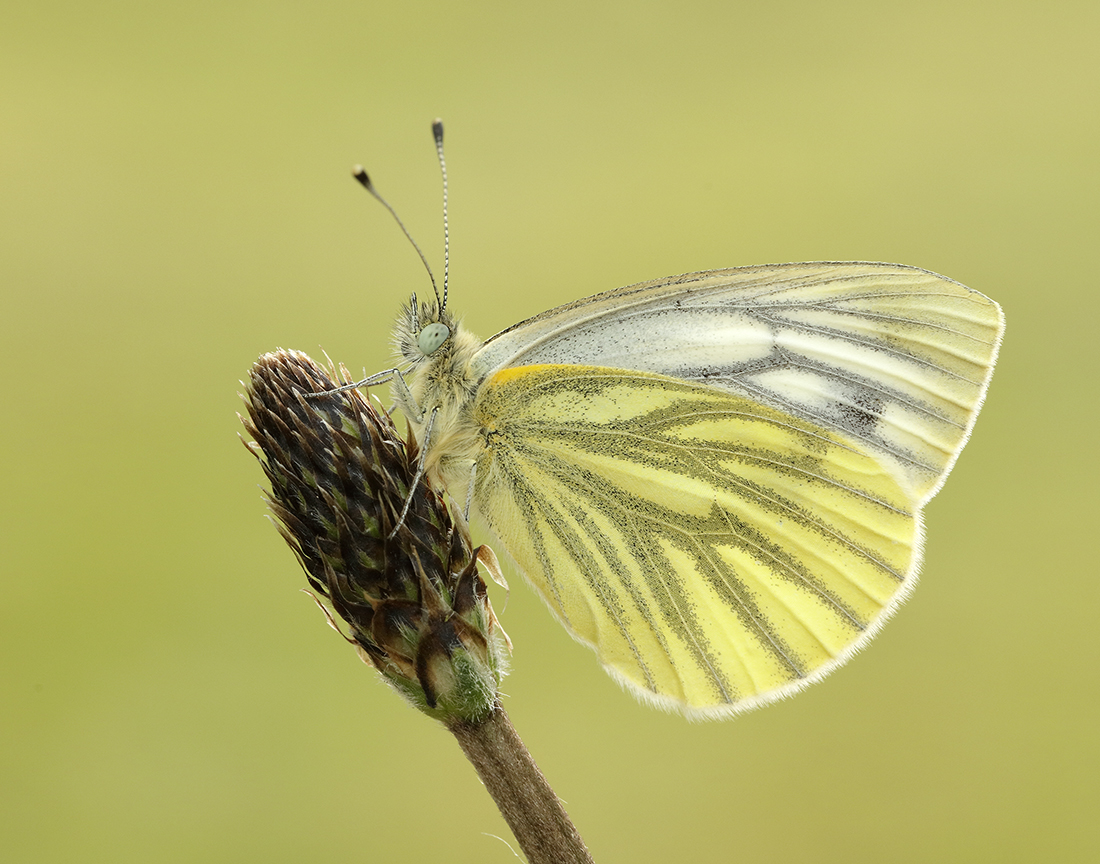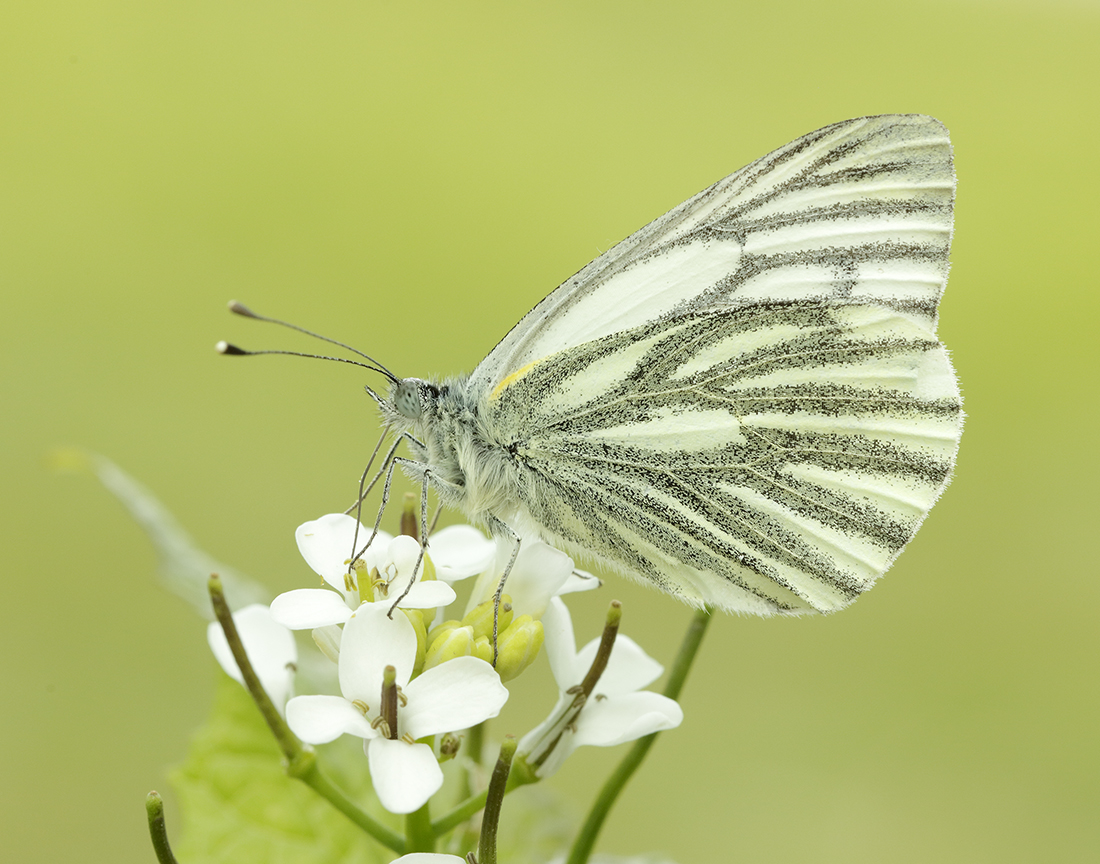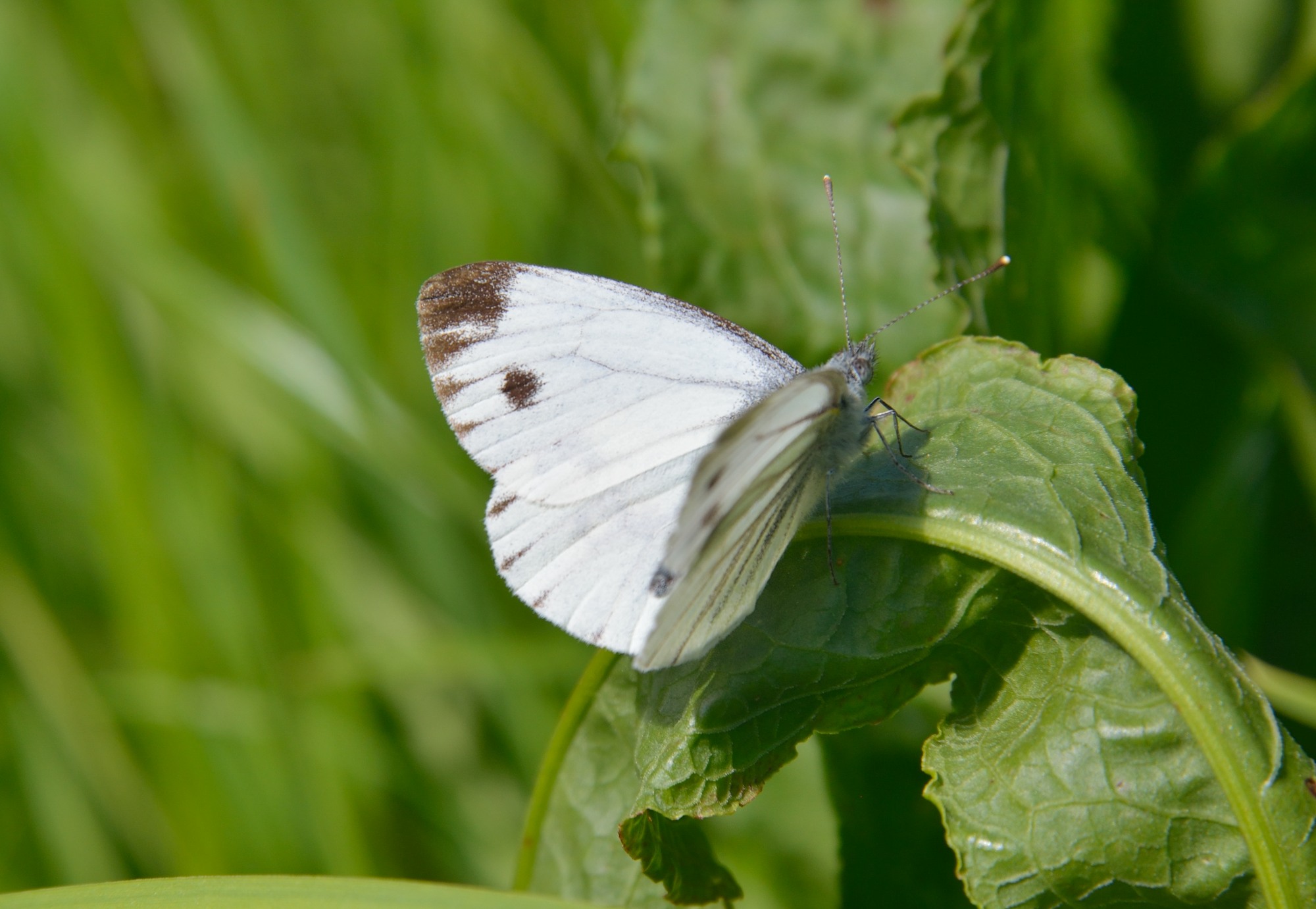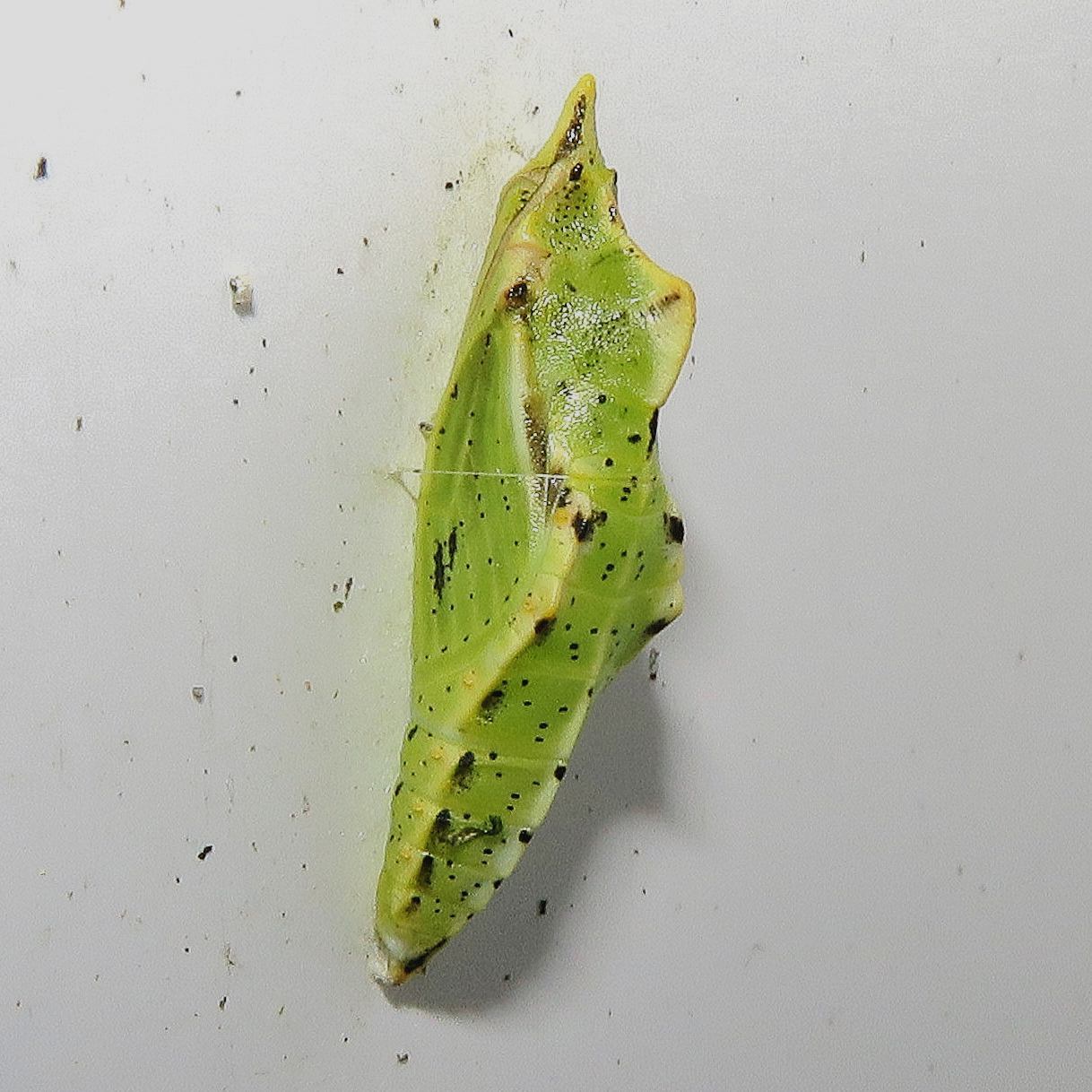This is the most widespread species of white and is the most likely to be seen in the countryside and uplands away from settlements.
Identification
Unlike the two ‘Cabbage Whites’, the Green-veined White is not a garden pest. The dark veins on the underside of the wings distinguish this from other white butterflies, but they can fade with wear and are less distinct in second generation butterflies. If only a brief sighting is made it can be easy to mistake a Green-veined White for a female Orange-tip. However, the latter are often much less active and when seen close up, the mottled underwings of the latter are usually obvious.
Those who manage a close encounter with a male will be rewarded with the fresh citrus smell of lemon verbena, the male pheromone that encourages females to mate.
Life cycle & flight period
The Green-veined White is one of the first butterflies of spring, but its staggered double-broods mean that it can be seen from early April into early October. The adults usually peak in late May/early June, with a larger peak between July and mid-August. Overwinters as a pupa.
Larval foodplant
Cuckooflower and Garlic Mustard are two of the most commonly used foodplants, but the Green-veined White can lay its eggs on many other foodplants including Charlock, Wild Radish and the numerous bitter-cresses.
Habitats
The Green-veined White is most common in damp grassy habitats and can suffer in hot dry summers. The males will also gather around muddy puddles searching for minerals and salts, and ‘mud-puddling’ aggregations have been noted more often in this species in the UK than any other.
The Green-veined White will take nectar from many plants, such as Marsh Thistle, Ragged-Robin and Common Knapweed.

